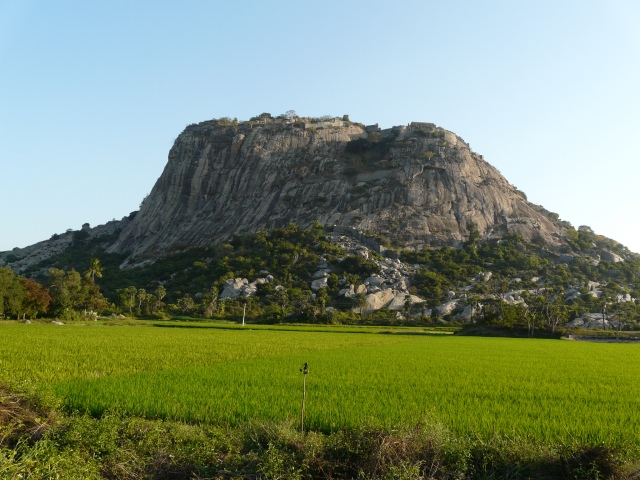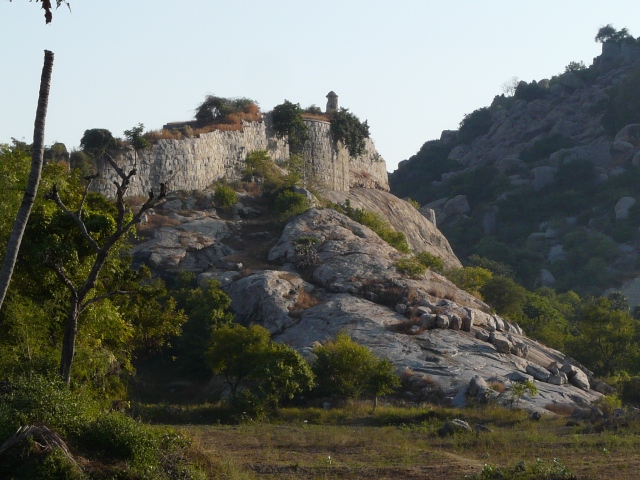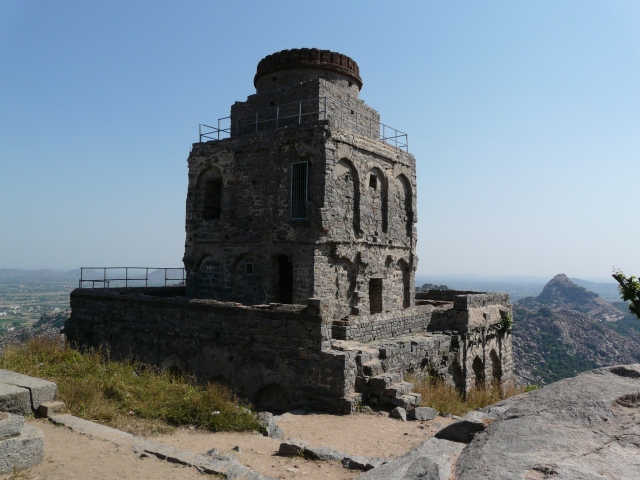Gingee Fort is, in one word, spectacular. It has a winning combination of fortifications and historical monuments that are spread over a vast area, and all set in a landscape of granite outcrops and boulders. None of the monuments have significant architectural importance (perhaps other than the Kalyan Mahal tower), but together they make a compelling site. And the granite hillock landscape spreads picturesquely far beyond the fort itself, especially in the southward direction (towards the Panamalai site which shares a similar landscape).
These granite outcrops are found throughout Tamil Nadu, and are an evocative and vital part of the state’s cultural landscape, and very often historical sites are associated with these outcrops (see Narthamalai and Kalagumalai for two other examples). North of Tamil Nadu, such granite outcrops are also prominent in the Deccan Plateau regions of Karnataka, Andhra Pradesh and Telangana. The Vijaynagar rulers/generals who developed Gingee Fort must have been nostalgic for their home base at Hampi, which is the best-known example of the intersection of such a landscape and historical site.
Gingee Fort was developed in the 15th and 16th c AD under the Vijaynagar empire. Between the 17th and 19th c, it was occupied by the Bijapur Sultanate, the Marathas, Mughals, French and British.
The ramparts of the fort connect three hillocks – Rajagiri, Krishnagiri and Chakkilidurg. Of these, Rajagiri and Krishnagiri are open to the public. The main palace and ancillary structures are located on flat land at the base of Rajagiri and Chakkilidurg. This flat area is divided into the outer and inner fort areas. The summits of both Rajagiri and Krishnagiri also have palace structures.
The Rajagiri hillock (with its monolithic granite exposed) is the iconic image of Gingee
Rajagiri with fortifications below
Views of Krishnagiri, which is a little distance away from Rajagiri and Chakkilidurg
Views of Chakkilidurg
Large reservoir at the base of Chakkilidurg, in the outer fort area
Inner fort monuments at the base of Rajagiri
The path up to Rajagiri from the inner fort
Views from the climb up to Rajagiri
Rajagiri hilltop monuments and views
In the photo below the inner fort monuments can be seen to the right in the middle-ground, and Krishnagiri in the top left
Chakkilidurg
Venkataramana Temple at the foot of Chakkilidurg, in the outer fort. This is the largest temple within the fort
Monuments at the summit of Krishnagiri visible in the photo below
Views of Rajagiri and Chakkilidurg from Krishnagiri


































Romantic
LikeLike